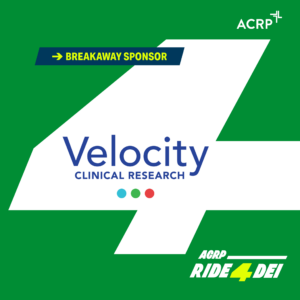The Association of Clinical Research Professionals (ACRP) is proud to recognize Velocity Clinical Research as a Breakaway Sponsor of the 2024 ACRP Ride4DEI—the clinical research industry’s premier cycling challenge that raises funds in support of ACRP Continuing Education Grants and tuition scholarships.
Community engagement is a critical step in improving the diversity of clinical trial participants, but this demands more than simply setting up a site in an area with an underserved population. Sustainable growth in recruitment and retention requires ongoing engagement beyond efforts to recruit for a specific trial.
Barriers such as the sparsity of clinical trial sites in rural and underserved communities, inadequate patient reimbursement, and stringent inclusion/exclusion criteria hinder the enrollment of patients from diverse and underrepresented populations. This article outlines strategies for addressing some of the issues facing diversity enrollment, and is intended to stimulate conversation within the industry to ensure these barriers are addressed during the design and implementation of clinical trials.
Identifying what simulation can achieve for educational and research objectives that other modalities cannot achieve is essential. This review discusses whether simulation can be used to teach the research process, keeping in mind that the value of simulation can’t be determined by randomized trials alone. A qualitative approach to assessing the value of teaching research via simulation adds a well-rounded perspective.
Recently, there has been a shift from qualitative assessments of drug safety toward a more quantitative approach. A quantitative framework is a method for arranging numerical data in a standardized format to assist in the decision-making process. Formalized evaluation of benefit and risk of harm is referred to as the benefit-risk framework (BRF), and has been structured in a variety of different ways. The lack of wide acceptance of a particular BRF underscores the significant challenges.




